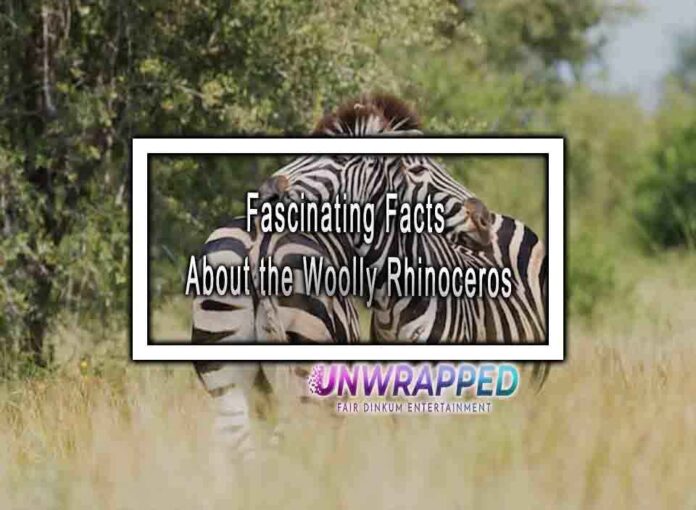The woolly rhinoceros (Coelodonta antiquitatis) was a large, cold-adapted mammal that lived during the Pleistocene epoch. Here are some fascinating facts about this prehistoric creature:
1. Physical Appearance:
- Distinctive Woolly Coat: As the name suggests, the woolly rhinoceros had a thick coat of fur, well-adapted to the cold environments of the Pleistocene.
- Horn Features: It had two large horns on its snout, with the front horn being longer and more prominent.
2. Geographical Range:
- Eurasian Distribution: The woolly rhinoceros inhabited a vast range, including Europe, Asia, and northern North America.
- Cold Habitats: It was well-adapted to tundra and steppe environments during the Ice Age.

Rhinocéros Laineux
3. Size and Build:
- Large Size: The woolly rhinoceros was comparable in size to the modern white rhinoceros, with an estimated weight of around 2,000 to 3,000 kilograms.
- Robust Build: It had a robust build, which helped conserve body heat in cold climates.
4. Horns and Defense:
- Two Horns: The woolly rhinoceros had two large horns made of keratin (the same protein in human hair and nails).
- Defense Mechanism: The horns were likely used for defense against predators and possibly in intraspecific conflicts.
5. Diet and Feeding Habits:
- Herbivorous Diet: The woolly rhinoceros was primarily herbivorous, feeding on grasses and other vegetation.
- Adaptations for Grazing: Its wide, square-shaped mouth and robust teeth were adaptations for grazing in open landscapes.
6. Extinction Timeline:
- End of the Pleistocene: The woolly rhinoceros, along with many other megafauna, became extinct at the end of the Pleistocene, around 10,000 years ago.
- Climate Change and Human Influence: The exact reasons for its extinction remain uncertain, but a combination of climate change and human hunting are considered contributing factors.
7. Paleontological Discoveries:
- Preservation in Permafrost: Some woolly rhinoceros specimens have been found exceptionally well-preserved in permafrost, providing insights into their anatomy and biology.
- Fossil Record: Fossil discoveries contribute to our understanding of the Pleistocene ecosystem and the interactions between megafauna species.
8. Human Interaction:
- Paleolithic Art: The woolly rhinoceros is depicted in several Paleolithic cave paintings, such as those found in Chauvet Cave and Lascaux in Europe.
- Possible Cultural Significance: Its presence in art suggests that it may have held cultural significance for early human populations.
9. Modern Relatives:
- Living Rhinoceros Species: While the woolly rhinoceros is extinct, there are still five living species of rhinoceros, each adapted to different environments in Africa and Asia.
The woolly rhinoceros is an iconic species of the Pleistocene megafauna, and its fossils continue to be a valuable source of information for paleontologists studying ancient ecosystems and the adaptations of cold-adapted mammals.











